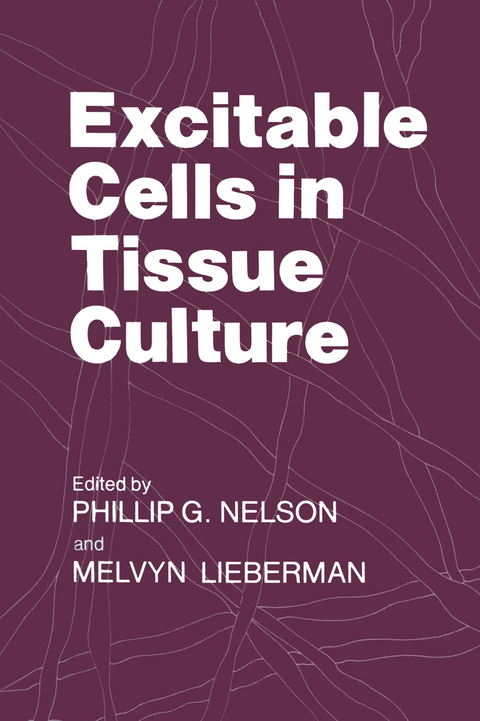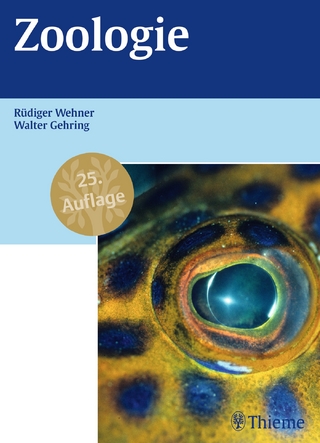
Excitable Cells in Tissue Culture
Springer-Verlag New York Inc.
978-1-4684-3805-5 (ISBN)
1 The Expression of Cholinergic and Adrenergic Properties by Autonomic Neurons in Tissue Culture.- 1. Introduction.- 2. Some Historical Aspects of the Culture of Autonomic Neurons.- 3. The Parasympathetic Neuron in Culture.- 4. Neurons of the Enteric Plexus in Culture.- 5. The Sympathetic Neuron in Culture: Basic Properties.- 6. Input to Sympathetic Neurons in Culture.- 7. Innervation of Visceral Target Tissues Grown with Sympathetic Neurons.- 8. Synaptic Interactions between Sympathetic Neurons in Culture.- 9. Discussion.- 10. Summary.- References.- 2 Electrophysiological and Structural Studies of Neurons in Dissociated Cell Cultures of the Central Nervous System.- 1. Introduction.- 2. Electrical Properties of Cultured Neurons.- 3. Central Synaptic Transmission.- 4. General Comments.- References.- 3 Neuropharmacology of Spinal Cord Neurons in Primary Dissociated Cell Culture.- 1. Introduction.- 2. Mammalian Spinal Cord Neurons in Primary Dissociated Cell Culture.- 3. Methodology.- 4. Amino Acid Pharmacology of Spinal Neurons in PDC Culture.- 5. Convulsant and Anticonvulsant Actions on Spinal Cord Neurons in PDC Culture.- 6. Summary.- 7. Future Directions.- References.- 4 Voltage Clamp Techniques Applied to Cultured Skeletal Muscle and Spinal Neurons.- 1. Introduction.- 2. Why Voltage Clamp?.- 3. Voltage Clamp System.- 4. Taming the Spinal Cord Neuron Spike.- 5. Microelectrode Shielding and Guarding.- 6. Space Clamping.- 7. Practical Points.- References.- 5 Membrane Noise Analysis.- 1. Introduction.- 2. Theory of Channel Noise.- 3. Spectra and Autocorrelation.- 4. Channel Noise.- 5. Experimental Methods for Measuring and Analyzing Conductance Fluctuations.- 6. Current Noise under Voltage Clamp in a Microelectrode System.- 7. Measurement of Single-Channel Currents.- 8. Summary of Major Results Obtained by Fluctuation Analysis on Chemically Excited Systems.- References.- 6 Nerve Cells in Clonal Systems.- 1. Introduction.- 2. The C-1300 Mouse Neuroblastoma.- 3. Rat Pheochromocytoma.- 4. Concluding Remarks.- References.- 7 Electrophysiology of Clonal Nerve Cell Lines.- 1. Introduction.- 2. Some General Considerations about Growth and Differentiation of Clonal Nerve Cell Lines.- 3. Resting Membrane Potential.- 4. Development of Electrical Excitability.- 5. Electrical Excitability of Differentiated Neuroblastoma Cells.- 6. Conclusions.- References.- 8 Studies of Voltage-Sensitive Sodium Channels in Cultured Cells Using Ion-Flux and Ligand-Binding Methods.- 1. Introduction.- 2. Development of Methods.- 3. Analysis of the Properties of Voltage-Sensitive Sodium Channels in Cultured Cells Using Ion-Flux and Ligand-Binding Methods.- 4. Conclusion.- References.- 9 Electrophysiological Properties of Developing Skeletal Muscle Cells in Culture.- 1. Introduction.- 2. Methods and Materials.- 3. Results.- 4. Discussion.- References.- 10 The Physiology of Smooth Muscle Cells in Tissue Culture.- 1. Introduction.- 2. Methods.- 3. Applications.- 4. Conclusions.- References.- 11 Calcium Exchange in Myocardial Tissue Culture.- 1. Introduction.- 2. The Scintillation-Disk Flow Cell Technique.- 3. The Role of the Glycocalyx.- 4. Cation Affinity Sequence.- 5. “Gas-Dissected” Membranes.- 6. Summary.- References.- 12 Cardiac Muscle with Controlled Geometry: Application to Electrophysiological and Ion Transport Studies.- 1. Introduction.- 2. Synthetic Strand.- 3. Cultured Cluster.- 4. Polystrand.- 5. Conclusion.- References.
| Erscheint lt. Verlag | 14.4.2012 |
|---|---|
| Zusatzinfo | 89 Illustrations, black and white; 440 p. 89 illus. |
| Verlagsort | New York, NY |
| Sprache | englisch |
| Maße | 152 x 229 mm |
| Themenwelt | Naturwissenschaften ► Biologie ► Zoologie |
| ISBN-10 | 1-4684-3805-0 / 1468438050 |
| ISBN-13 | 978-1-4684-3805-5 / 9781468438055 |
| Zustand | Neuware |
| Haben Sie eine Frage zum Produkt? |
aus dem Bereich


